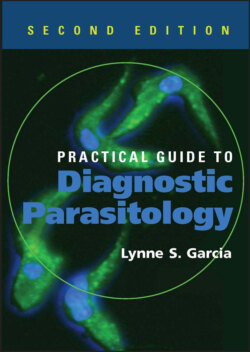Читать книгу Practical Guide to Diagnostic Parasitology - Lynne Shore Garcia - Страница 74
На сайте Литреса книга снята с продажи.
Collection Method
ОглавлениеFecal specimens should be collected in clean, wide-mouth containers; often a waxed cardboard or plastic container with a tight-fitting lid is selected for this purpose. The specimens should not be contaminated with water or urine because water may contain free-living organisms (including arthropod larvae and free-living nematodes) that can be mistaken for human parasites and urine may destroy motile organisms. Stool specimen containers should be placed in plastic bags for transport to the laboratory for testing. The specimens should be labeled with the following information: the patient’s name and identification number, the physician’s name, and the date and time the specimen was collected (if the laboratory is computerized, the date and time may reflect arrival in the laboratory, not the actual collection time). The specimen must also be accompanied by a request form indicating which laboratory procedures are to be performed; in some cases this information will be computerized and will be entered into the system on the nursing unit or in the clinic. Although it is helpful to have information concerning the presumptive diagnosis or relevant travel history, this information rarely accompanies the specimen. If such information is relevant and necessary to maximize diagnostic testing, the physician may have to be contacted for additional patient history.
